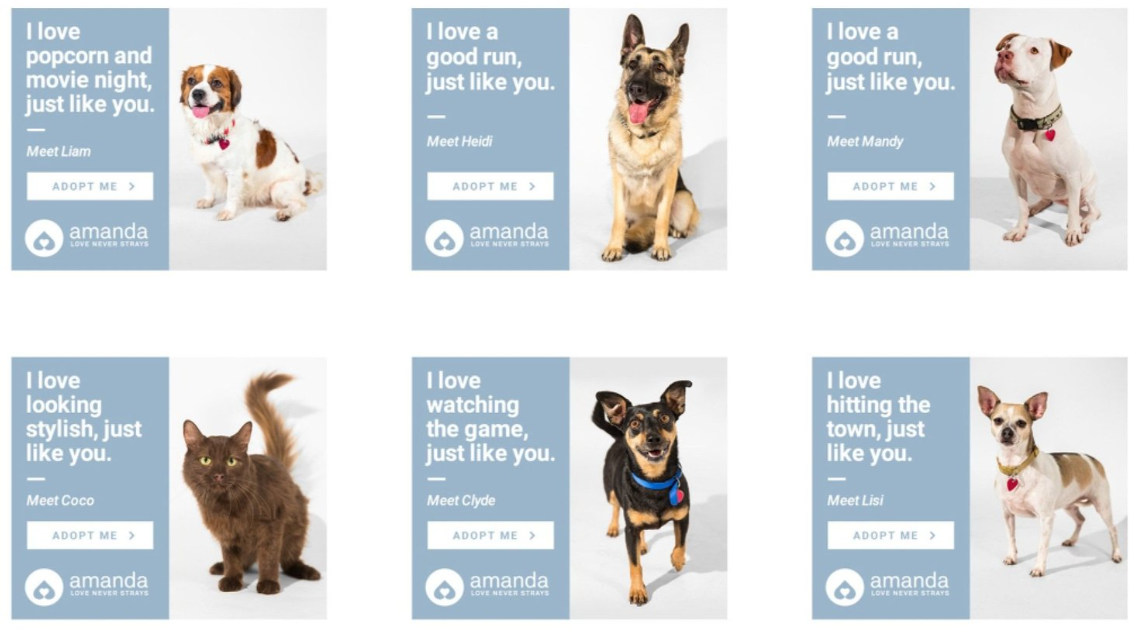Programmatic advertisinghas revolutionized the digital advertising industry by enabling automated, data-driven advertising campaigns that offer precise targeting and optimization capabilities. It has transformed the way advertisers buy and sell advertising inventory by removing manual processes and replacing them with automated software and algorithms.
As a result, programmatic advertising has become an essential part of modern digital marketing strategies, with billions of dollars spent on programmatic advertising each year. In this fast-paced digital age, programmatic advertising provides advertisers with the ability to reach their target audiences more efficiently and effectively, while publishers can monetize their inventory more efficiently.
What Is Programmatic Advertising?

What Is Programmatic Advertising?
Programmatic advertising is a type of digital advertising that uses software and algorithms to automate the buying, placement, and optimization of online adsin real time. It enables advertisers to target specific audiences based on factors such as demographics, interests, behaviors, and geographic locations, and then bid for ad inventory across various ad exchanges and supply-side platforms (SSPs)
The process involves multiple players, including advertisers, publishers, ad exchanges, demand-side platforms (DSPs), data management platforms (DMPs), and ad servers. Programmatic advertising offers benefits such as improved efficiency, greater transparency, and increased targeting capabilities, allowing advertisers to reach their intended audiences more effectively and efficiently.
Benefits Of Programmatic Advertising
Programmatic advertising offers a range of benefits to advertisers, including:
- Targeting Capabilities: Programmatic advertising allows advertisers to reach specific target audiences based on factors such as demographics, interests, behaviors, and geographic locations. This targeting capability helps to increase the relevance of ads, resulting in higher engagement rates and conversions.
- Efficiency and Automation: Programmatic advertising automates many manual processes, making it more efficient and cost-effective than traditional advertising methods. Advertisers can set up campaigns quickly and easily, reducing the time and resources required for ad placement.
- Real-Time Optimization: Programmatic advertising enables real-time optimization of campaigns, allowing advertisers to make adjustments on the fly based on data insights. This optimization helps to improve campaign performance and increase ROI.
- Greater Transparency: Programmatic advertising offers greater transparency into the ad buying and placement process, enabling advertisers to track ad placements, impressions, clicks, and other key metrics in real time. This transparency helps to improve campaign performance and reduce ad fraud.
- Access to Inventory: Programmatic advertising provides access to a vast inventory of ad space across multiple channels, including display, video, mobile, and social media. This access allows advertisers to reach their target audiences across a variety of platforms, increasing their reach and exposure.
Overall, programmatic advertising offers a range of benefits that can help advertisers to reach their target audiences more efficiently and effectively, resulting in higher engagement rates, conversions, and ROI.
Who Uses Programmatic Advertising?
Programmatic advertising is used by a wide range of organizations, including:
- Advertisers: Advertisers of all sizes, from small businesses to large corporations, use programmatic advertising to reach their target audiences more efficiently and effectively. Programmatic advertising provides advertisers with the ability to set up campaigns quickly and easily, target specific audiences, and optimize campaigns in real-time, resulting in higher engagement rates and conversions.
- Agencies: Advertising agencies use programmatic advertising to manage campaigns on behalf of their clients. Programmatic advertising enables agencies to automate many manual processes, making it more efficient and cost-effective to manage multiple campaigns simultaneously.
- Publishers: Publishers use programmatic advertising to monetize their inventory by selling ad space to advertisers through ad exchanges and supply-side platforms (SSPs). Programmatic advertising enables publishers to automate the ad-selling process, reducing the time and resources required to manage ad placements.
- Ad Networks: Ad networks use programmatic advertising to aggregate inventory from multiple publishers and sell it to advertisers. Programmatic advertising enables ad networks to manage a large inventory of ad space and provide advertisers with access to a wide range of ad placements.
Overall, programmatic advertising is used by a diverse range of organizations to buy and sell digital advertising inventory more efficiently and effectively. By leveraging data and automation, programmatic advertising provides advertisers, agencies, publishers, and ad networks with the tools they need to reach their target audiences and achieve their advertising goals.
How Does Programmatic Advertising Work?
Programmatic advertising is a type of digital advertising that uses automated software to buy and sell ad inventory in real time. It has become a popular advertising approach due to its efficiency, precision targeting, and data-driven optimization capabilities. Here's a simplified overview of how programmatic advertising works:
- The advertiser sets campaign objectives: The advertiser sets campaign objectives, target audience, and budget.
- Advertiser submits bid: The advertiser submits a bid for ad inventory in real time through a demand-side platform (DSP).
- The auction takes place: The bid is entered into an automated auction process that takes place in real time, with multiple bidders competing for the same ad inventory.
- Ad inventory is sold: The highest bidder wins the auction and their ad is displayed on the publisher's website or app.
- Ad is served: The ad is served to the target audience on the publisher's website or app.
- Performance is measured and optimized: Programmatic advertising provides real-time data on ad performance, allowing advertisers to optimize their campaigns based on data insights.
How And Why Is Programmatic Advertising Successful?
Programmatic advertising has become increasingly successful in recent years due to its efficiency, precision targeting, and data-driven optimization capabilities. Here's a closer look at how and why programmatic advertising is successful:
Efficiency
Programmatic advertising is a highly efficient approach to digital advertising. It uses automated software to buy and sell ad inventory in real time, eliminating the need for manual negotiations and contracts. This automated approach streamlines the ad buying and selling process, reducing costs and increasing efficiency.
Precision Targeting
Programmatic advertising enables advertisers to target specific audiences with precision. It uses data analysis and segmentation to identify target audiences based on factors such as demographics, interests, and behaviors. This targeting capability enables advertisers to reach the right people at the right time with the right message, increasing the effectiveness of their campaigns.
Data-Driven Optimization
Programmatic advertising provides real-time data on ad performance, enabling advertisers to optimize their campaigns based on data insights. This data includes metrics such as click-through rates, conversion rates, and engagement rates.
By analyzing this data, advertisers can identify which ads are performing well and which ones need to be optimized. This optimization process ensures that advertisers get the most value from their advertising spend.
Increased ROI
Programmatic advertising's efficiency, precision targeting, and data-driven optimization capabilities have resulted in increased return on investment (ROI) for advertisers.
By streamlining the ad buying and selling process, reducing costs, and improving targeting and optimization, programmatic advertising has enabled advertisers to get more value from their advertising spend. This increased ROI has made programmatic advertising an attractive option for advertisers of all sizes.
Digital Advertising Vs. Programmatic Advertising

Digital advertising refers to any type of advertising that is delivered through digital channels such as websites, social media, search engines, email, and mobile apps.
Digital advertising can be delivered in a variety of formats, including display ads, video ads, native ads, and more. Digital advertising can be purchased through various methods, such as cost-per-click (CPC), cost-per-impression (CPM), and cost-per-action (CPA).
Programmatic advertising, on the other hand, is a type of digital advertising that uses automated systems to purchase and deliver ads in real time. Programmatic advertising uses software to buy digital advertising space and place ads on websites and other digital platforms. This process is done through a bidding system that allows advertisers to compete for ad space in real time.
While digital advertising and programmatic advertising are similar in that they both use digital channels to reach audiences, programmatic advertising takes a more automated approach to ad buying and delivery.
Programmatic advertising allows for greater targeting and personalization of ads, as well as more efficient ad buying and delivery, but it can also be more complex and requires more technical knowledge to set up and manage.
Programmatic Advertising Platforms
Programmatic advertising platforms are a critical component of programmatic advertising. These platforms use automated software to buy and sell ad inventory in real time, enabling advertisers to target specific audiences and optimize their campaigns based on data insights.
Demand-Side Platform (DSP)
A demand-side platform (DSP) is a platform used by advertisers to purchase ad inventory. It allows advertisers to access multiple ad exchanges, enabling them to reach a broad range of publishers and ad inventory.
DSPs provide advertisers with a range of targeting options, including demographic, geographic, and behavioral targeting. DSPs also offer real-time bidding (RTB) capabilities, enabling advertisers to bid on ad inventory in real time and optimize their campaigns based on data insights.
Supply-Side Platform (SSP)
A supply-side platform (SSP) is a platform used by publishers to sell ad inventory. It allows publishers to manage multiple ad exchanges and ad networks, providing access to a wide range of advertisers.
SSPs provide publishers with the ability to set pricing and inventory controls, ensuring that they maximize their revenue. SSPs also offer real-time reporting, enabling publishers to optimize their inventory based on data insights.
Ad Exchange
An ad exchange is a platform that enables the buying and selling of ad inventory in real time through an auction process. Ad exchanges provide a transparent and efficient marketplace for advertisers and publishers to trade ad inventory. Ad exchanges typically offer access to multiple DSPs and SSPs, enabling advertisers and publishers to reach a broad range of inventory and buyers.
Data Management Platform (DMP)
A data management platform (DMP) is a platform that collects and analyzes data on consumer behavior. It enables advertisers to target specific audiences based on demographics, interests, and behaviors. DMPs provide advertisers with a range of data visualization and analysis tools, enabling them to optimize their campaigns based on data insights.
Types Of Programmatic Advertising
There are several types of programmatic advertising that advertisers can use to reach their target audience. Here are some of the most common types:
Real-Time Bidding (RTB)
Real-time bidding (RTB) is a type of programmatic advertising that involves buying and selling ad inventory in real time through an auction process. Advertisers bid on ad inventory based on the target audience and the value of the impression. The highest bidder wins the ad placement and the ad is displayed to the user.
Programmatic Direct
Programmatic direct is a type of programmatic advertising that involves buying ad inventory directly from publishers, rather than through an auction. Advertisers can negotiate rates and terms directly with publishers, which can be advantageous for campaigns that require specific ad placement.
Private Marketplace (PMP)
A private marketplace (PMP) is a type of programmatic advertising that involves buying ad inventory through a private auction, which is only accessible to a select group of advertisers. Publishers can set rules and restrictions on who can participate in the auction, giving them greater control over who displays ads on their website.
Automated Guaranteed
Automated guaranteed is a type of programmatic advertising that involves buying ad inventory through an automated process, but with guaranteed ad placements. Advertisers and publishers can negotiate rates and terms in advance, and the ad placement is guaranteed to appear on the publisher's website.
Contextual Advertising
Contextual advertising is a type of programmatic advertising that involves displaying ads on websites that are relevant to the contentof the page. This type of advertising uses keywords and other contextual data to determine which ads to display to the user.
Formats Of Programmatic Advertising
Programmatic advertising formats refer to the various types of digital ad formats that can be used in programmatic advertising campaigns. Here are some of the most common programmatic advertising formats:
Display Ads
Display ads are one of the most common programmatic advertising formats. They typically consist of static or animated images and can be displayed on websites, social media platforms, and mobile apps. Display ads can be targeted based on factors such as demographics, interests, and behaviors.
Video Ads
Video ads are a popular programmatic advertising format that involves displaying video content to users. Video ads can be displayed on websites, social media platforms, and mobile apps. They can be targeted based on factors such as demographics, interests, and behaviors.
Native Ads
Native ads are a type of programmatic advertising format that blends in with the content of the website or app on which they are displayed. They are designed to look like the surrounding content and are often less intrusive than other types of ads. Native ads can be targeted based on factors such as demographics, interests, and behaviors.
Audio Ads
Audio ads are a programmatic advertising format that involves displaying ads in audio content, such as podcasts, music streaming services, and online radio. They can be targeted based on factors such as demographics, interests, and behaviors.
Social Ads
Social ads are a programmatic advertising format that involves displaying ads on social media platforms such as Facebook, Twitter, and LinkedIn. Social ads can be targeted based on factors such as demographics, interests, and behaviors.
Mobile Ads
Mobile ads are a programmatic advertising format that is designed for display on mobile devices. They can include formats such as banner ads, video ads, and native ads. Mobile ads can be targeted based on factors such as location, device type, and behaviors.
Programmatic Advertising Targeting
Programmatic advertising targeting refers to the process of using data and technology to reach the right audience with the right message. Here are some of the most common programmatic advertising targeting methods:
Demographic Targeting
Demographic targeting involves targeting ads based on characteristics such as age, gender, income, and education. Advertisers can use demographic targeting to reach specific groups of people who are more likely to be interested in their products or services.
Behavioral Targeting
Behavioral targeting involves targeting ads based on a user's online behavior, such as the websites they visit, the content they engage with, and the actions they take. Advertisers can use behavioral targeting to reach users who have demonstrated an interest in their products or services.
Contextual Targeting
Contextual targeting involves targeting ads based on the content of the webpage or app on which they are displayed. Advertisers can use contextual targeting to reach users who are reading or viewing content that is relevant to their products or services.
Geographic Targeting
Geographic targeting involves targeting ads based on a user's location. Advertisers can use geographic targeting to reach users in specific regions or areas who are more likely to be interested in their products or services.
Device Targeting
Device targeting involves targeting ads based on the type of device a user is using, such as a desktop computer, mobile phone, or tablet. Advertisers can use device targeting to deliver ads that are optimized for the user's device and screen size.
Retargeting
Retargeting involves targeting ads to users who have previously interacted with a website or product. Retargeting uses cookies to track user behavior and target users with relevant ads based on their past behavior.
Programmatic Advertising Metrics
Programmatic advertising metrics are the key performance indicators (KPIs) used to measure the success of programmatic advertising campaigns. Here are some of the most important programmatic advertising metrics to track:
Impressions
Impressions refer to the number of times an ad is displayed on a website or app. Tracking impressions can help you understand how many people are potentially seeing your ads.
Click-Through Rate (CTR)
Click-through rate measures the percentage of people who clicked on an ad after seeing it. A high CTR indicates that your ad is resonating with your target audience and generating interest.
Conversion Rate
Conversion rate measures the percentage of users who take a desired action after clicking on an ad, such as making a purchase or filling out a form. Tracking conversion rate is important to measure the effectiveness of your programmatic advertising campaigns in driving results.
Cost Per Impression (CPM)
Cost per impression refers to the cost of showing an ad to 1,000 users. Tracking CPM can help you understand the cost-effectiveness of your programmatic advertising campaigns.
Cost Per Click (CPC)
Cost per click measures the cost of each individual click on an ad. Tracking CPC can help you understand the cost-effectiveness of your programmatic advertising campaigns in driving traffic to your website.
Return On Ad Spend (ROAS)
Return on ad spends measures the revenue generated by your programmatic advertising campaigns compared to the amount spent on ads. Tracking ROAS is important to understand the overall profitability of your advertising campaigns.
Viewability
Viewability measures the percentage of an ad that is actually seen by users. Tracking viewability can help you understand how effective your programmatic advertising campaigns are at capturing users' attention.
How Can You Succeed With Programmatic Advertising?

How To Optimize Your Programmatic Ad Campaign Efficiently
To succeed with programmatic advertising, here are some key factors to consider:
Define Your Target Audience
Before launching a programmatic advertising campaign, it is important to define your target audience. By clearly understanding who your target audience is, you can create more effective ads that resonate with them. When you move into a new area of advertising as a marketer, you will meet a lot of new ideas and words. Take the time to learn them.
Choose The Right Programmatic Platform
There are many programmatic advertising platforms available, and it is important to choose the one that best fits your needs. Look for a platform that offers the targeting options you need, has a user-friendly interface, and provides transparent reporting.
Set Clear Goals
Before launching a programmatic advertising campaign, it is important to set clear goals for what you want to achieve. Whether you want to increase website traffic, generate leads, or drive sales, make sure your goals are specific, measurable, and achievable.
To do this, you should look at the data you already have to figure out what kind of advertising you need and how tomake a good plan that will help you set short-term and long-term goals.
Keep The Human Touch In Mind
Even though programmatic advertising is based on machines and algorithms, that doesn't mean it has nothing to do with people. There are different kinds of platforms, and some of them, like War Room, offer fully or partially managed services. Others, like Digilant, give you technical platforms that you can use to run your programmatic buying.
From there, you'll need to give your buying to skilled marketers who can plan, control, and make sure it's the best it can be. In the end, to be the most successful, you will need to find the right balance between automation and smart human input. So don't count on the algorithm alone to help your campaign get the best results.
Monitor And Optimize Your Campaigns
Programmatic advertising campaigns require ongoing monitoring and optimization to ensure they are performing at their best. Regularly review your campaign performance data and make adjustments to targeting, creative, and bidding strategies as needed.
Use Relevant And Engaging Creative
To capture the attention of your target audience, use relevant and engaging creative in your programmatic advertising campaigns. Make sure your ads are visually appealing, have clear messaging, and include a strong call-to-action.
Leverage Data And Analytics
Programmatic advertising provides access to a wealth of data and analytics. Use this data to gain insights into your target audience, campaign performance, and optimization opportunities.
Keep Fake News From Hurting Your Brand
To keep this from happening, make sure your demand-side blacklist is always updated and checked for inappropriate sites. Some platforms let you keep ads from being spent on whole categories, which can be very helpful.
Another choice is to use a whitelist, which is important if your product is sensitive. This will give you a list of approved sites, not sites that have been blocked. It will make it harder to reach your audience and could make it more expensive, but it will make sure that your ad isn't linked to anything explicit or offensive.
If you use an agency, make sure they do everything they can to keep your ads from showing up on sites that aren't good or aren't safe.
Keep An Eye Out For Programmatic Ad Fraud
So how can you protect your businessfrom fraud? First, look at your budget and how far you want to reach. When it comes to programmatic advertising, marketers have been too focused on reach, which can leave campaigns open to abuse by bots.
When bidding for ad space, if a deal seems too good to be true, it probably is. If you don't want to get fake traffic, don't focus too much on reach. Instead, combine reach with traffic quality
Programmatic Advertising Examples
There are many different kinds of programmatic ads. The best thing about using programmatic ads is that you can change the content to appeal to the people you want to reach. Some good examples of programmatic campaigns are:
Amanda Foundation
The Amanda Foundation is a hospital and shelter for animals in the Los Angeles area that does not make moneyfrom them. It made a campaign to help shelter animals who were in danger find a home in their last days.
In particular, it used programmatic signals like location, demographics, and how people browsed to show specific animal pictures to the right people. If a user was interested in big dogs, a banner ad with big dogs instead of small dogs would be shown to them. Messages and images were made to fit the behavior and interests of each person.
Geico Insurance
Most likely, you've seen or heard a Geico ad in some form. But, have you ever thought about the different ads Geico sends you? Geico uses TV commercials, website banner ads, ads on social media sites, and other types of ads to create a real cross-platform campaign to get the word out.
The brand chooses its content carefully based on the platform it's on, its target audience and demographics, and other factors. Geico has a page on its website where people can watch their favorite commercials. This is because its ads are so popular.
Challenges And Opportunities In Programmatic Advertising
Programmatic advertising has revolutionized the way that advertisers buy and sell digital advertising, but it is not without its challenges and opportunities. Here are some of the key challenges and opportunities in programmatic advertising:
Challenges In Programmatic Advertising
- Ad Fraud- Ad fraud is a major challenge in programmatic advertising, with estimates suggesting that as much as 30% of programmatic ad spend is wasted on fraudulent traffic. Advertisers must take steps to combat ad fraud, such as working with trusted partners and using third-party verification tools.
- Ad-blocking- The rise of ad-blocking software has made it increasingly difficult for advertisers to reach their target audience. Advertisers must focus on creating high-quality, engaging ads that are less likely to be blocked by users.
- Privacy Concerns- Privacy concerns are a growing challenge in programmatic advertising, with regulations such as GDPR and CCPA imposing strict requirements on the collection and use of user data. Advertisers must ensure that they are compliant with these regulations and respect users' privacy.
Opportunities In Programmatic Advertising
- Data-Driven Targeting - Programmatic advertising provides access to a wealth of data that can be used to target ads more effectively. By leveraging data-driven targeting, advertisers can reach their ideal audience with precision and deliver more relevant ads.
- Real-Time Optimization- Programmatic advertising allows for real-time optimization of campaigns, meaning that advertisers can make adjustments on the fly based on performance data. This allows for more efficient use of ad spend and better results.
- Cross-Device Targeting- Programmatic advertising enables advertisers to target users across multiple devices, such as desktop and mobile. This provides greater reach and allows for a more seamless user experience.
In conclusion, programmatic advertising presents both challenges and opportunities for advertisers. By understanding these challenges and opportunities, advertisers can navigate the programmatic landscape and leverage its benefits to drive better results.
People Also Ask
What Is The Goal Of Programmatic Advertising?
Programmatic advertising is a way to buy and optimize digital campaigns without going through publishers directly. It's meant to replace people in negotiations with machine learning and AI optimization.
Is SEO Programmatic Advertising?
You might think that SEO(search engine optimization) and programmatic advertising are two different ways to market online. But in reality, there are a lot of things you can learn from SEOthat you can use to make your programmatic campaigns more successful.
What Are Programmatic Advertising Examples?
Through a complex ecosystem, programmatic advertising makes it possible for brands or agencies to buy ad impressions on publisher sites or apps. Ad slotsfor digital out-of-home (DOOH), online, streaming, TV, video, and voice ads are all part of programmatic advertising.
Are Facebook Ads Programmatic?
Facebook has a programmatic ad platform for demand-side ads that works a lot like Google Ads. It sells ad space in real-time, so for each impression, there is an auction.
Is YouTube Programmatic?
You've probably seen programmatic ads while browsing YouTube. These preroll, banner, and in-video ads are all examples of the different types of programmatic ads that the platform has. Through the Google Ads console, you can buy programmatic ads on YouTube.
Conclusion
Programmatic advertising is a game-changer in the digital advertising industry. It has enabled advertisers to reach their target audiences more effectively and efficiently while providing publishers with new revenue opportunities.
As programmatic advertising continues to evolve, it is important for advertisers and publishers to stay up-to-date with the latest trends and technologies to maximize the benefits of this innovative advertising approach. With its many benefits, programmatic advertising will undoubtedly continue to play a critical role in the future of digital advertising.


